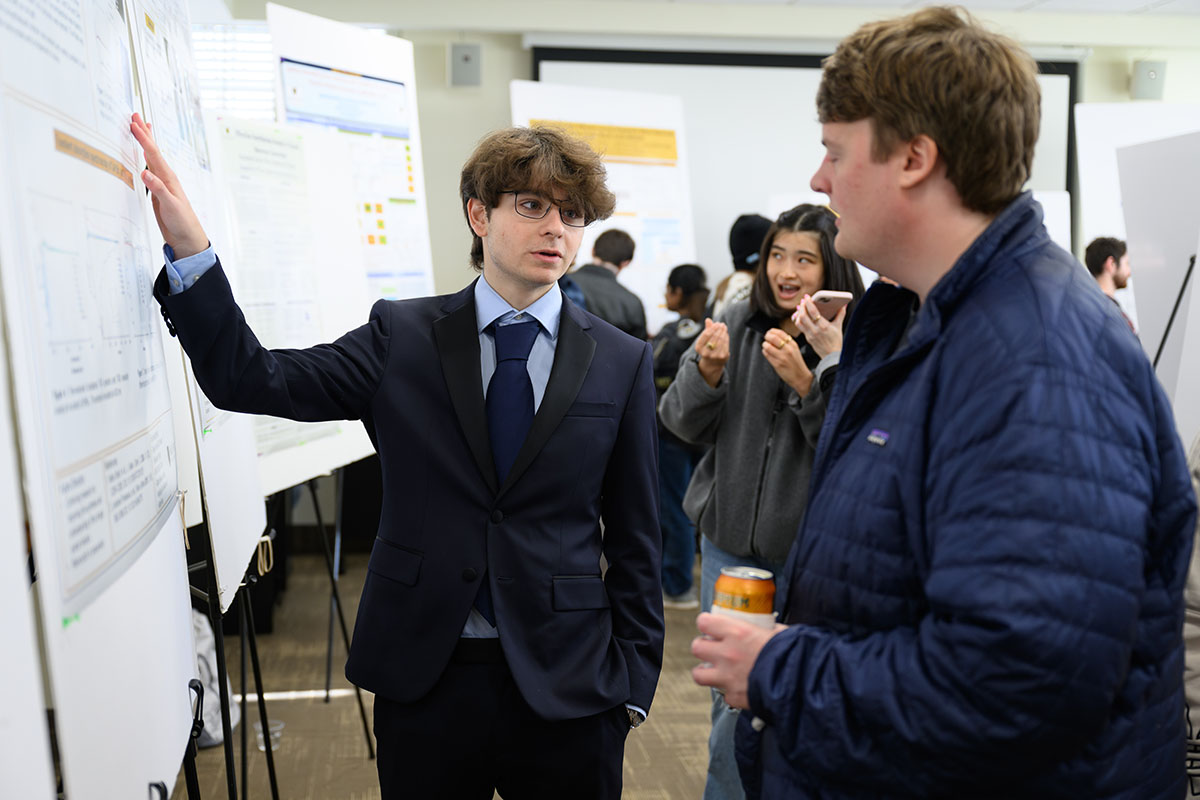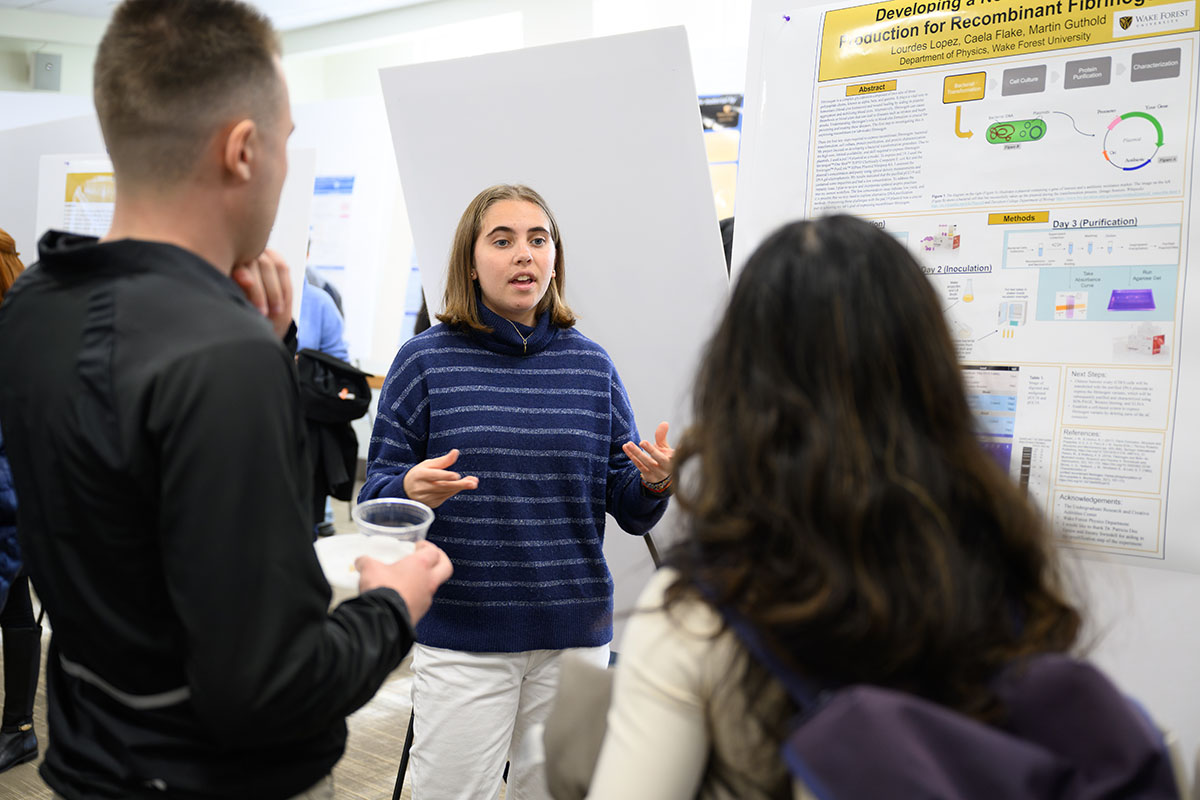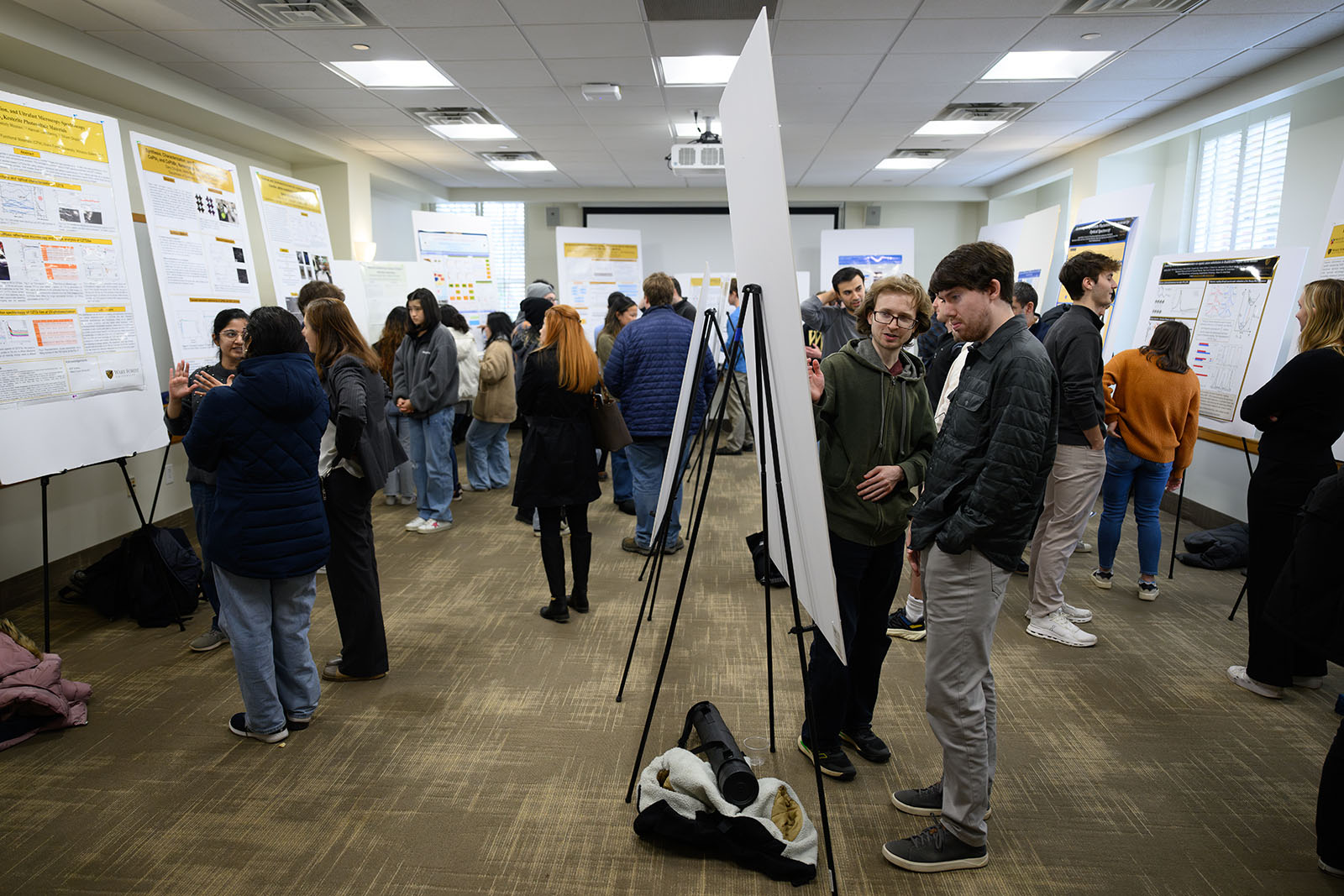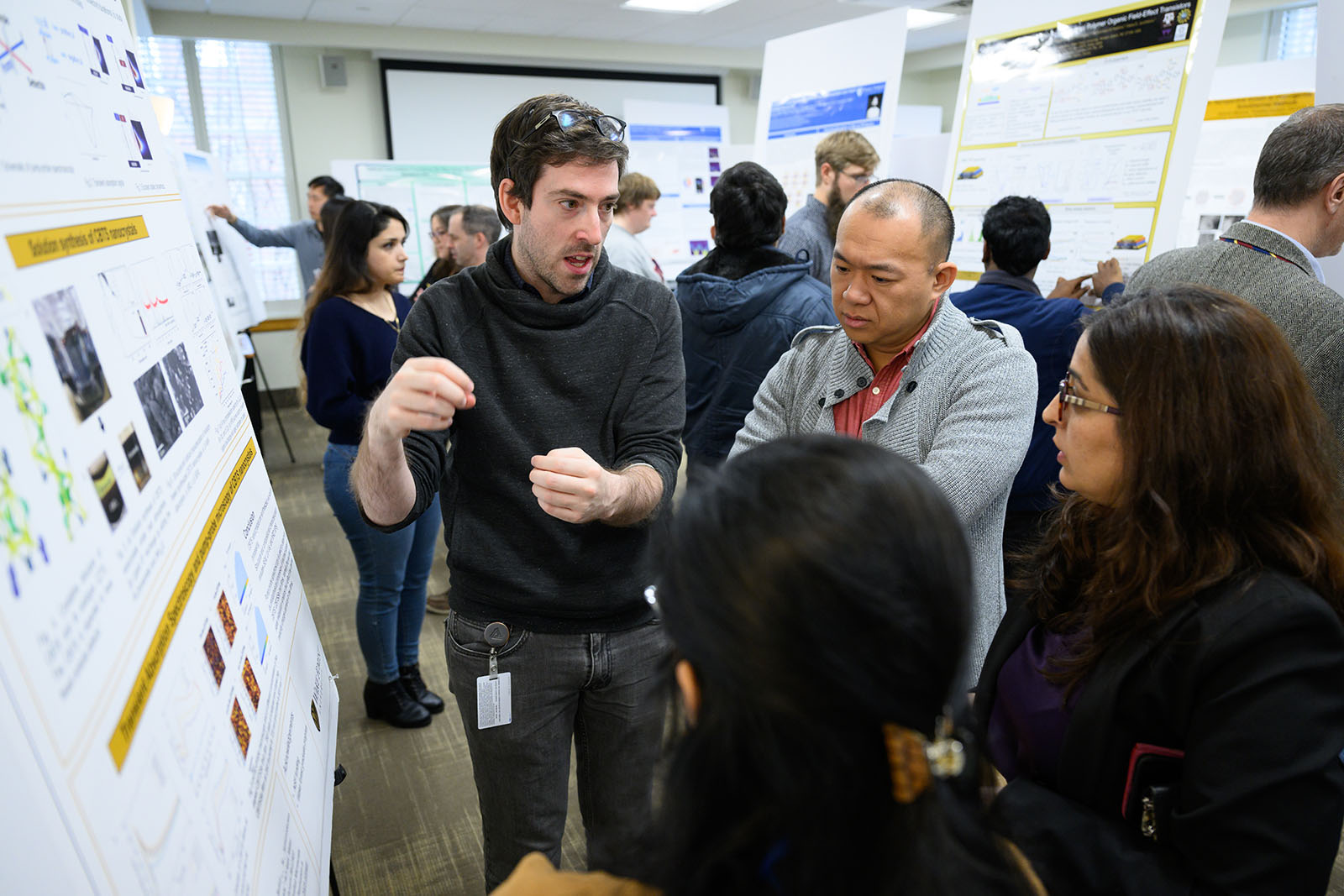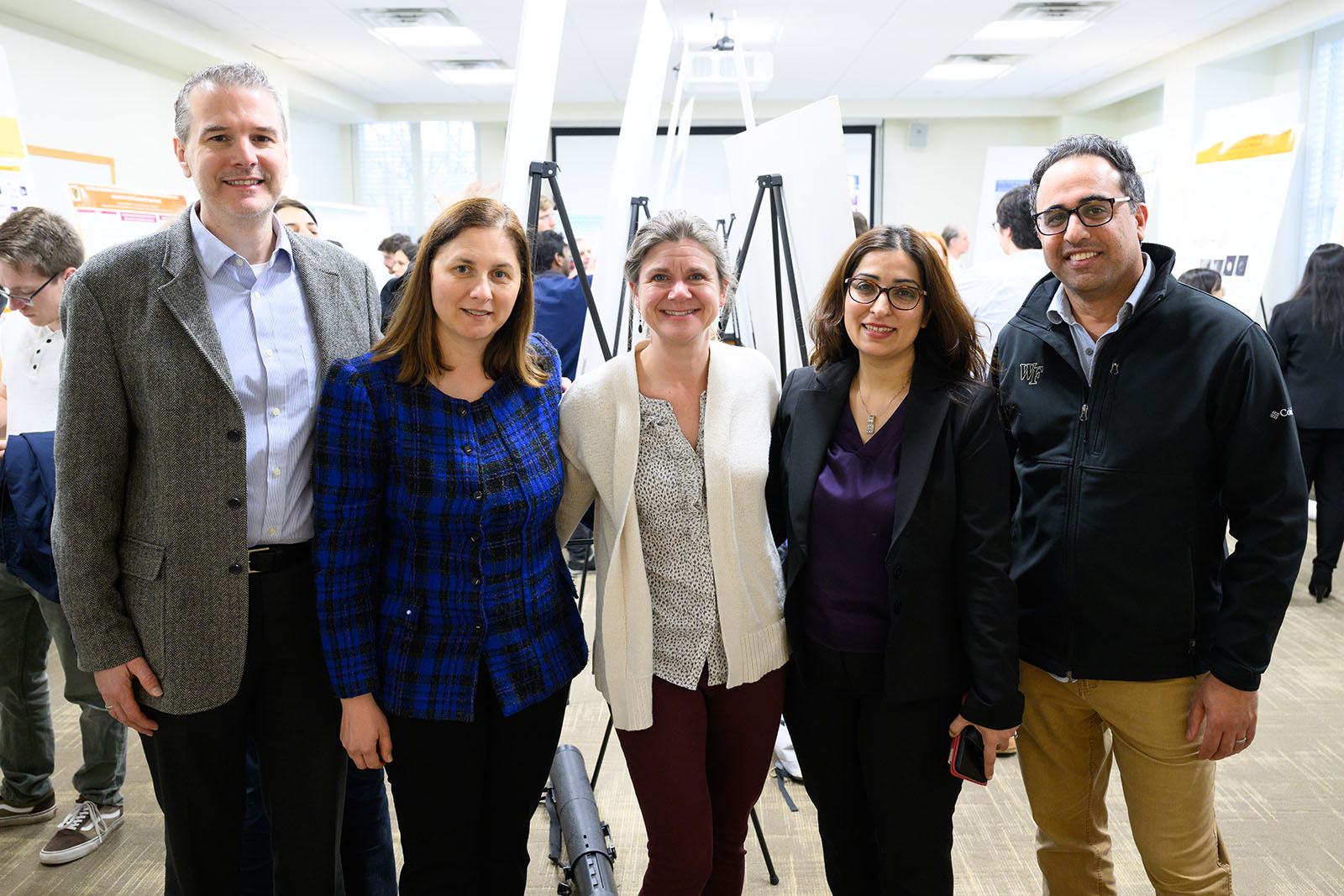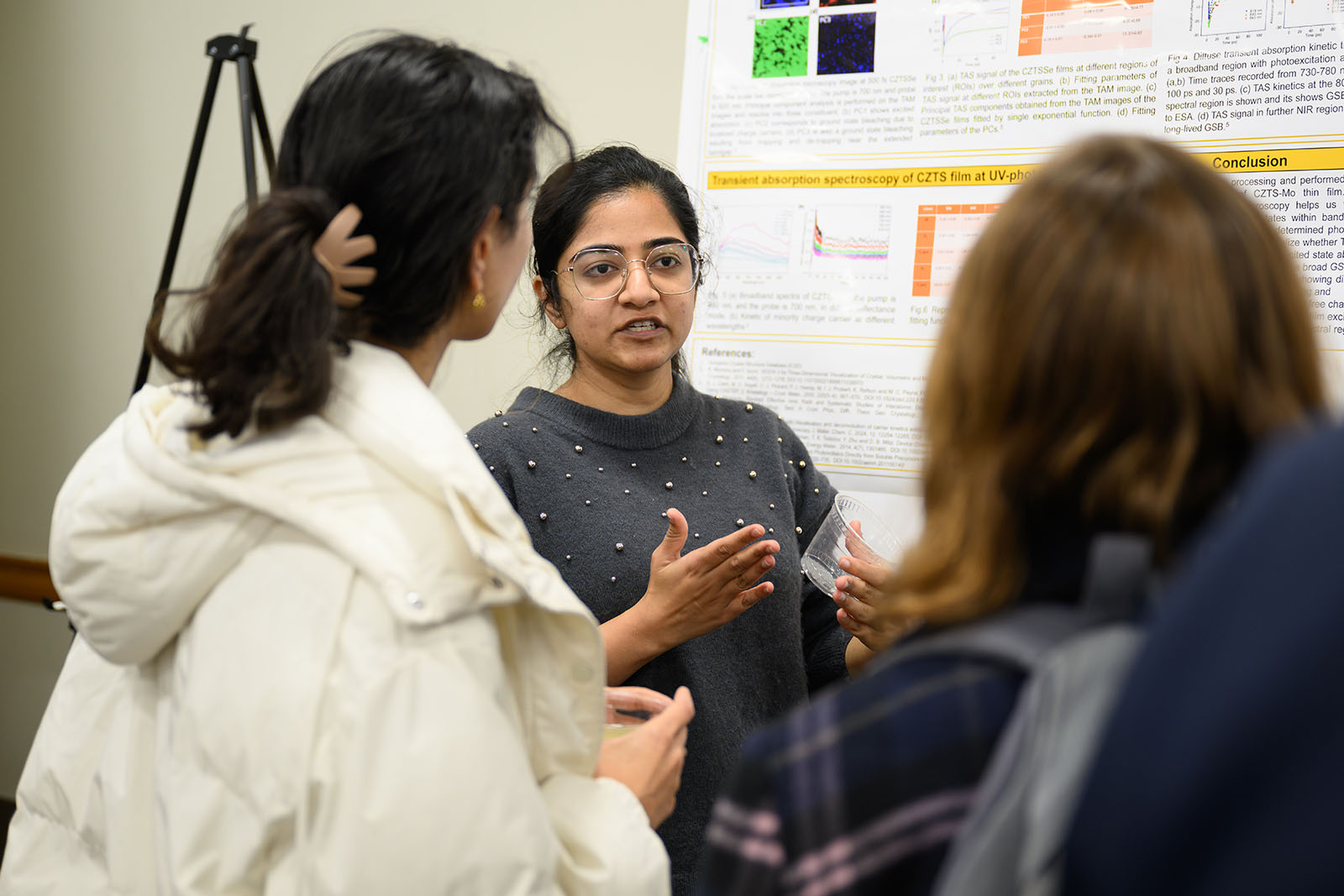Center for Functional Materials Research Day celebrates innovation and collaboration
Wake Forest students, faculty present projects

On a Friday afternoon, more than 100 scientists, across several disciplines, gathered to share ideas and innovations around their common interest—materials research. About 30 Wake Forest students and faculty members presented posters on their diverse research successes in Benson University Center for the Center for Functional Materials Research Day.
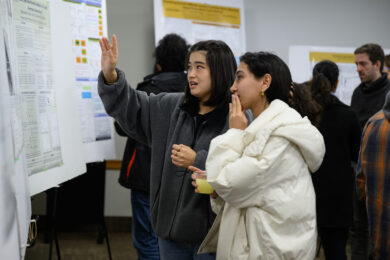
“One area of our research lab is focused on developing sustainable nanomaterials such as synthetic biomimetic melanin nanoparticles and finding different uses for this natural pigment, melanin,” said Elham Ghadiri, assistant professor of chemistry. “Melanin is in our hair, skin, vegetables and fruit. This pigment is cost- effective. It’s biofriendly, and we think it can be used to capture and convert solar energy, to create new materials designs, and different types of devices. You can see from the student research posters how it might be used in medical and other applications.”
Ghadiri, an expert in ultrafast laser spectroscopy, is one of several faculty members who received a grant from the center to work with students in the lab on materials-based research projects.
“I have been working with Professor Ghadiri for over a year and it’s significant for me to present this project in this setting,” said Rachel Huo, a first-year PhD student. “It’s helped me transition from my undergraduate to graduate level research and take it even further. I’m so proud to be here.”
Research connections
The Center for Functional Materials (CFM) provides a platform to connect a broad range of materials-focused research groups and support the multidisciplinary research necessary for break-through developments. The center supports research, education, and outreach.
Functional materials are materials that have been designed with a particular function in mind—such as conduct electricity or respond to light in a particular way—and can be useful for a wide variety of applications including electronics, energy storage and medical devices.
“If you think of it, everything around you is a material—from the device and screen you read this article on to the air you breathe, or the chair you sit on, and even the very DNA you are made of—and so it makes sense that we try to understand the materials around us,” said Timo Thonhauser, Wright Family Professor of Physics and director of the CFM.
“The main idea of the center is to bring people together and foster internal collaborations, as well as external collaborations with other universities. This event gives us an opportunity to know what everyone is working on and to foster those discussions,” he said.
This was the second annual research day. It included representatives from various departments including engineering, physics and chemistry, and the School of Medicine.
“It’s not only the research itself. It’s an opportunity to discover common goals among scientists. This could lead to writing grants together for larger projects. We also learn about new tools that have been created and other resources that can help advance research and stimulate new possibilities,” said Oana Jurchescu, a physicist who is the Baker Family Physics Professor at Wake Forest University.
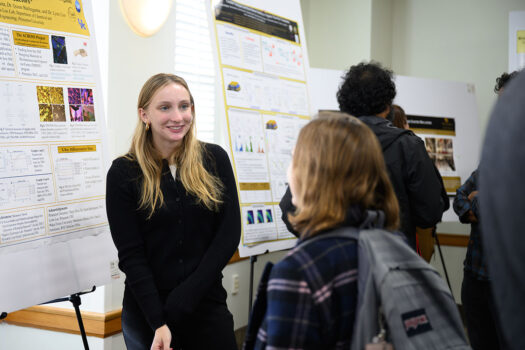
Sophomore Edith (Edy) MacKenzie stands in front of her poster explaining to a visitor more about her research on thin organic electronic devices that can be incorporated into flexible and wearable applications. She was mentored by Professor Jurchescu at Wake Forest. Then, during the summer, she also worked in a lab at Princeton University, a collaborator on a project funded by the National Science Foundation.
“I got to study these new materials to try to improve their performance when incorporated in devices. The project involves collaborating with other scientists across the country. So we are working together to help further this field of science and help advance the commercialization of organic electronics. It’s exciting to practice presenting at research day, so I’m prepared to talk about it with larger audiences.”
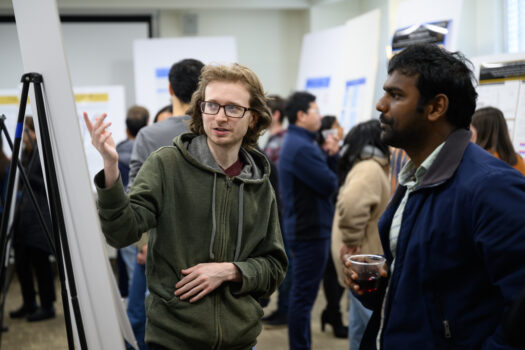
A few feet away, physics graduate student Derek Dremann, also working in Jurchescu lab, greets visitors as they stop by to ask him questions. His project involves a partnership with researchers at the Wake Forest School of Medicine.
“Currently, in radiation therapy there isn’t a very good way of monitoring radiation dose in real-time during treatment for patients,” said Dremann. “We created these electronic devices that are conformal and can be placed directly on the human body at the point of contact with radiation to give a more precise measurement of radiation dose, with high spatial accuracy. This could help improve dose for better care. For me, just meeting other people who can understand your work and encourage curiosity is what I enjoyed most about Research Day.”
Dany Doughan, a sophomore in Ghadiri’s lab studying materials that absorb light for solar panels, said, “It’s exciting to be able to network with experts. There’s so much innovation in this room. I’m excited to see what we all do next.”
Categories: Entrepreneurship & Innovation, Experts, Mentorship, Personal & Career Development, Research & Discovery
Media Contact
Wake Forest News
media@wfu.edu
336.758.5237

